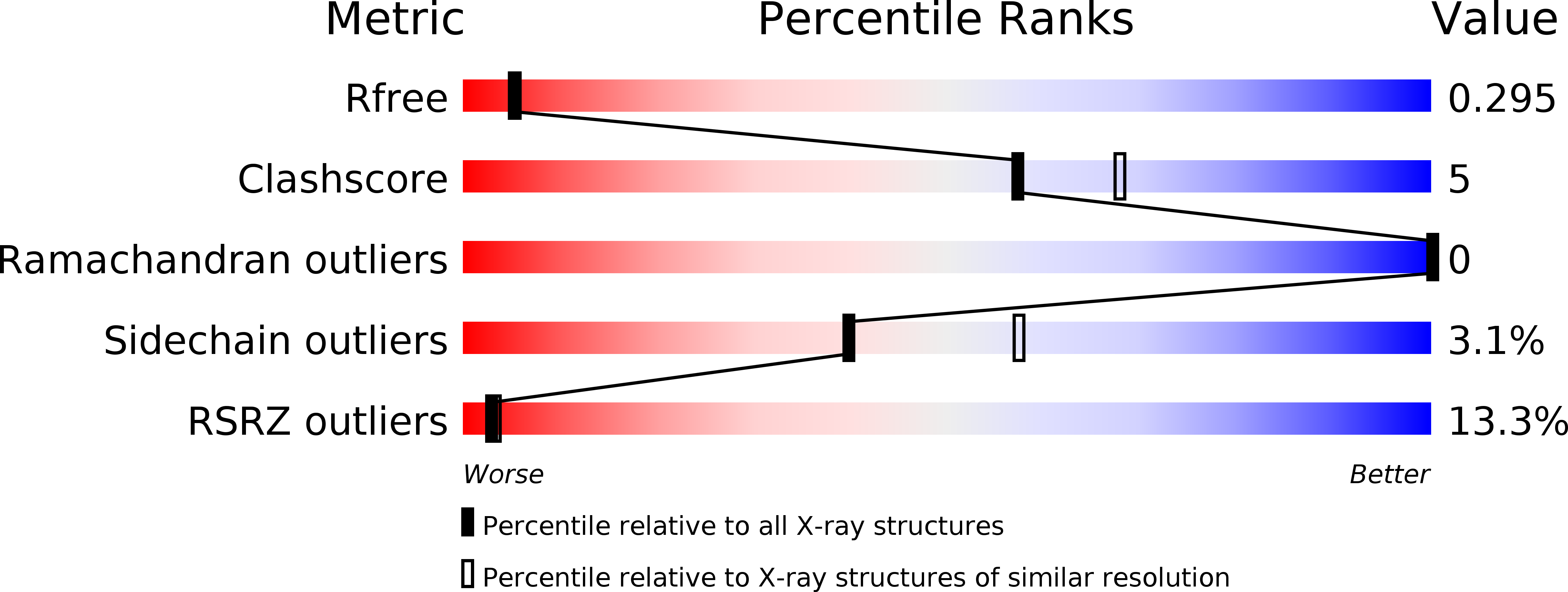
Deposition Date
2018-07-11
Release Date
2019-05-15
Last Version Date
2024-03-13
Entry Detail
PDB ID:
6E2J
Keywords:
Title:
Crystal structure of the heterocomplex between human keratin 1 coil 1B containing S233L mutation and wild-type human keratin 10 coil 1B
Biological Source:
Source Organism:
Homo sapiens (Taxon ID: 9606)
Host Organism:
Method Details:
Experimental Method:
Resolution:
2.39 Å
R-Value Free:
0.29
R-Value Work:
0.27
R-Value Observed:
0.27
Space Group:
P 64 2 2


